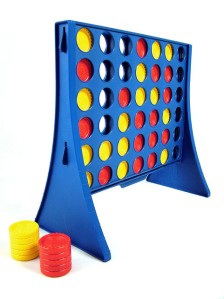At a recent Learning Development Group session during an INSET day, a group of DHS teachers looked at 4 key aspects of outstanding teaching:
-
Questioning
- Feedback
- Independence
- Challenge
For each one we considered the important principles underlying it and then some some successful strategies that had been used to implement them in the classroom – in just 75 minutes!
Read on for a summary of the session………
Questioning
Principles
- Should involve as many students as possible
- Should aim to move students from surface learning to deep understanding
- Should be challenging and engaging
- Should be planned and linked to assessment criteria
- Should be supportive, so students feel confident to contribute
Strategies
- Use the question stems on the learning journey poster to plan differentiated questions, in order to challenge all students.
- Pair up high/ low ability students and get them to formulate responses to questions together – facilitates good peer learning.
- Use the fake facebook, twitter and SMS tools on http://www.classtools.net/ to create mock pages and profiles for historical/ literary/ scientific people – to generate discussion and questions for students.
- Give students ‘thinking time’ before expecting an answer.
- Think, pair, share. Ask a question, give students thinking time, discuss it with their partner, then share it.
- Use ‘lolly sticks’ to randomly pick who will answer the questions – or any other random generator e.g. lottery numbers.
- ‘Throw the dolphin’ – cuddly dolphin is held by the person answering the question. They then pass the dolphin on to the person who has to answer the next question (doesn’t have to be a dolphin!).
- Pose, pause, pounce, bounce
- Use white boards and ABCD cards to gather student responses to questions – but make sure you ask them to justify their responses.
- ‘Ask a friend’ Students are given the option to ‘Ask a friend’ if they get stuck on a question.
- ‘What’s the question?’ – Give students the answer and get them to come up with the question.
- Use the ‘Question Grid’ (an excellent resource from @JOHNSAYERS) to encourage students to come up with their own questions about a visual prompt. Encourage more demanding questions:
This example was from a science lesson looking at dialysis. It was used at the start of the lesson and students were asked to formulate questions they would ask to find out what is going on in the photo e.g. what is the machine for? Why does the man need it? How might being on the machine affect his lifestyle? At the end of the lesson they came back to the questions and answered them…….good demonstration of progress.
A powerpoint template for this can be downloaded here: question grid
Click here to watch a brilliant video presentation by John, talking about how he has used this and other strategies. Well worth 4 minutes 55 seconds!
- Use the P4C approach to structuring questioning around an issue:
1. Look and See – what simple patterns do they notice?
2. Ask an expert – what research questions do you need to ask to find out more and where would you find the answers?
3. Use your imagination – what would happen if?
4. Philosophical question – ask a broad enquiry based question to develop deeper understanding.
- Encourage students to talk their answers through before writing them down.
- Encourage students to talk through their answers before writing them – encourage them to ask questions about their work, to improve it before writing.
Feedback
Principles
Should be:
- Focused
- Formative
- Relating to success criteria
- Encouraging
- Planned into the lesson
- From the teacher, student or peers
- Verbal and/or written
Strategies
- When students are giving feedback to their peers tell them that it needs to be kind, specific and useful.
- 5 a day – plan to focus on 5 different students each lesson, to give them really detailed feedback. So over a series of lessons, everyone gets quality feedback.
- Need to plan time into the lesson for students to respond to feedback.
- Develop marking that ‘closes the gap’ and develops a dialogue between student and teacher
Challenge
Principles
- The learning experience of all students should be ‘high challenge, low stress’ for all.
- Students should be challenged in terms of knowledge and understanding, but also key skills such as thinking skills, group work, independence, problem solving skills, communication and presentation skills etc
- Teachers have to promote the belief that all students can succeed and have high expectations.
- Feedback should be challenging, in order to promote progress.
Strategies
- Challenge student thinking by probing questions e.g. what if? What is that similar to? How is that different to? What made you think that? Can you explain how/why/when?
- Use SOLO taxonomy to encourage students to make links between concepts and ideas.
- Use the idea of ‘extenders’ tasks (thanks to the Angmering school for this strategy):
- Identify the students who should be stretched in your class. All classes will have a range of abilities, so there are always some who need that extra challenge.
- Identify the extender group in your mark book, seating plan and on their exercise books/folders with a sticker or similar.
- Explain it to that group how the process works – there will always be an extension or alternative task(s) for you during the lesson. This is what you need to do to get the top levels/grades.
- Explain to the rest of the class that they are welcome to try the extender task once they have completed the core task. If they can demonstrate that they are able to do both consistently over a period of time they may join your extender group.
- Review all lessons and look for that extender task when you set students something to do.
In this example of an ‘extenders’ task, more able students were asked to think about comparing two key scientific processes.
- Provide students with exemplar, high quality work to aspire to and explain why it is so good. Great example here in textiles.
Independence
Principles
- Students taking ownership of their learning
- Students being encouraged to ask their own questions to promote learning.
- Need to consider what resources will need to be available to support independence.
- Teacher needs to stand back, trust students and just facilitate learning – in order to really promote independence.
Strategies
- Flipped learning – students ‘do the learning’ at home (watch youtube videos, Khan academy etc) then carry out activities on it during the lesson. Teacher supports and promots.
- Different groups are given different topics to research and learn. They then present/teach to the rest of the class.
- Co-construction – A development of the above. Students are given the topics/ learning outcomes they will need to cover over a period of time, and then plan with the teacher, what topics they will research, plan and then deliver to their peers.
- Use the ‘Independent Learning Skills’ on the Learning Journey poster to highlight to students what skills will be developed by the particular activity. As a teacher think about the ones you do regularly and the ones you don’t. Plan to address the ones you don’t in future lessons:
- Encourage students to interact with specifications and mark schemes – highlight key points/ RAG understanding.
- Give students a broad learning objective – and ask them to come up with ‘key learning questions’ that they want to find the answer to.
- Give some students a ‘secret mission’ at the start of the lesson – something they have to find out during the lesson. This could be an extension/enrichment to the learning that everyone else is doing. Reveal the ‘Secret Learner’ at the end of the lesson and ask them to share their learning with the class. Rotate around each lesson.
- More ideas about independent learning can be found here.
MANY THANKS TO THE DHS TEACHERS WHO MADE THIS SESSION SUCH AN ENJOYABLE & PRODUCTIVE EXPLORATION OF THE BRILLIANT THINGS THAT ARE HAPPENING IN OUR CLASSROOMS.



















Pingback: Plenary Prefects | Class Teaching
Pingback: Edssential » The big 4
Pingback: An Inspector Called… | Class Teaching
Pingback: Outstanding Learning Development Group | Class Teaching
Pingback: The Big Idea – Questioning | Class Teaching
Pingback: How to be an expert teacher | Class Teaching
Pingback: Class Teaching | Sharing best practice in secondary teaching and learning « The Road to RIO
Pingback: Thinking Mathematically Series 2. CHALLENGE | The view from the maths bunker
Pingback: The Evolution of ‘The Big 4′ | Class Teaching